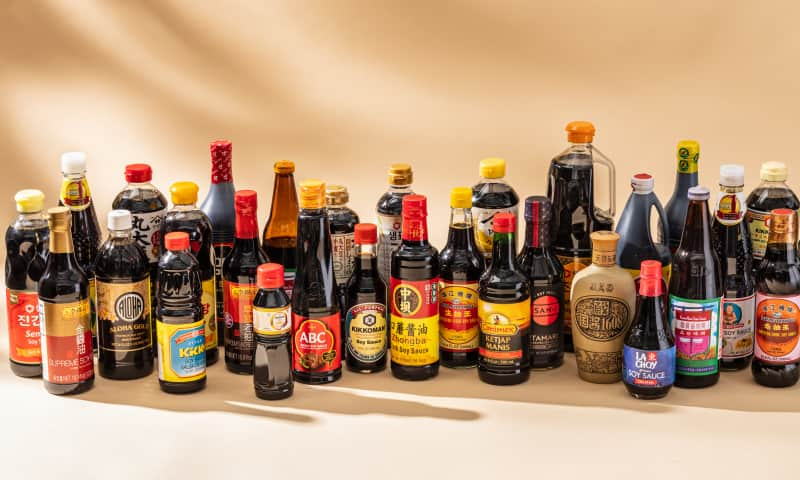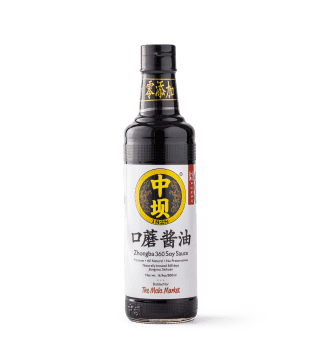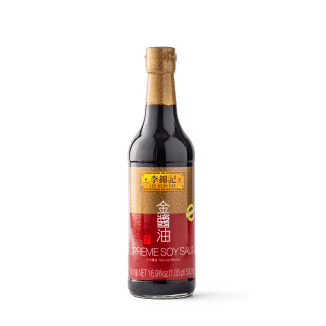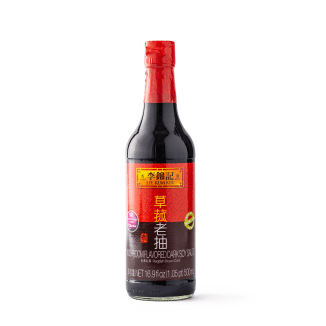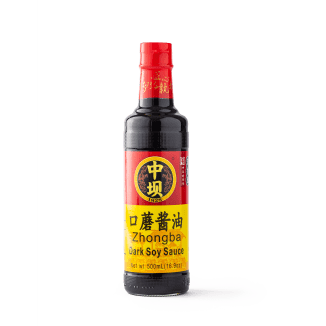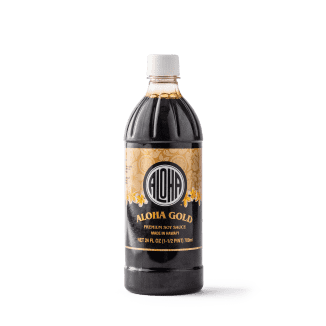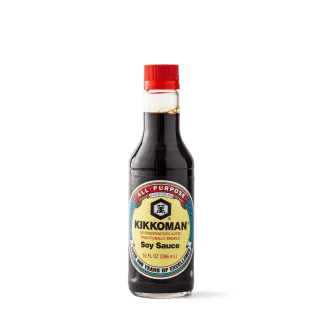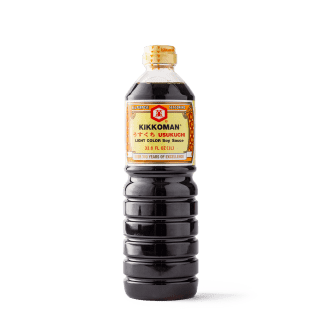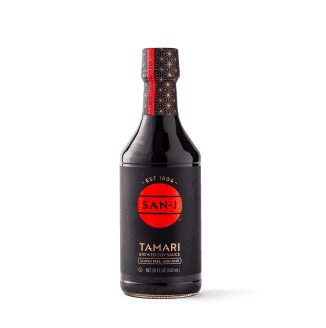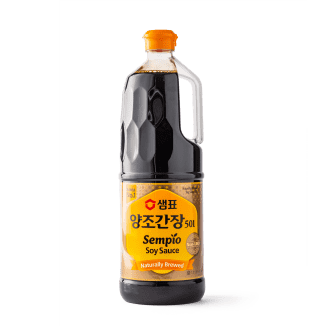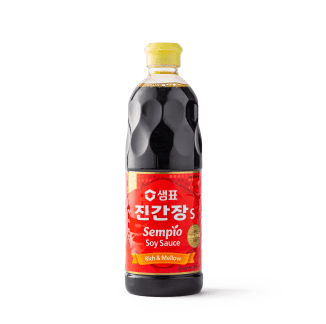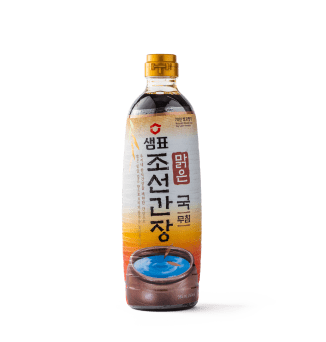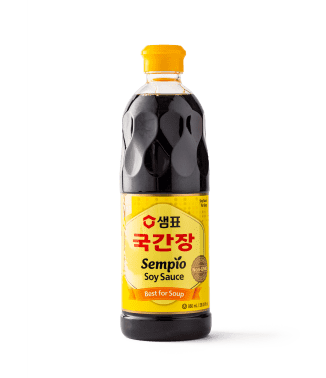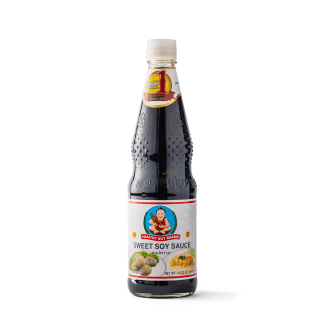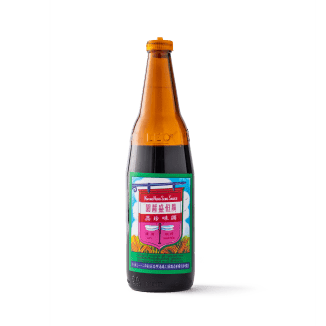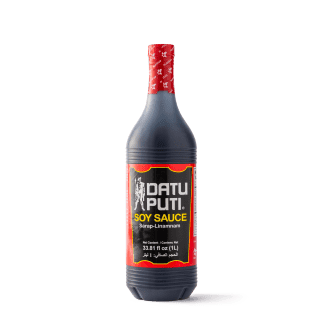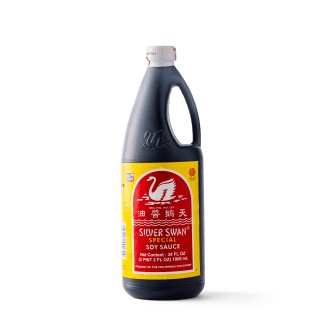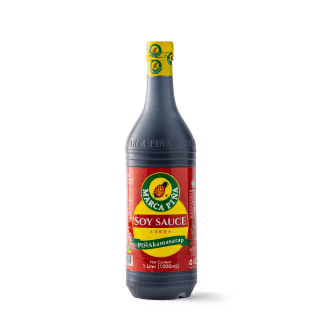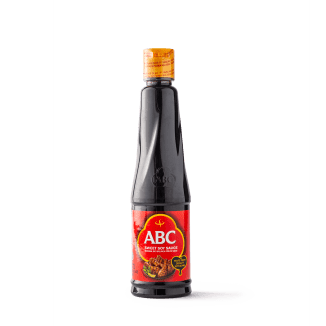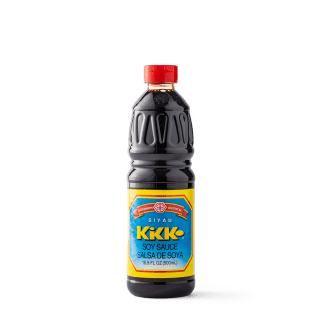Soy sauce originated 2,000 years ago in ancient China, where it was created as a way to stretch salt, an expensive commodity at the time. After making its way to Japan in the seventh century, it eventually spread throughout East and Southeast Asia and across the globe.

From the funky and papaya-like flavors of see ew khao in Thai cuisine to the earthy and sharp toyo common in Filipino food, flavors and aroma vary greatly from one style of soy sauce to another and stretch far beyond that of Kikkoman, the top-selling brand in the United States. No matter how much you know about soy sauce, there is always more to learn. Come along with us as we celebrate this incredible ingredient and find new styles to expand your cooking repertoire.
How Soy Sauce Is Made
Chinese soy sauce was originally made with soybeans only. The Japanese method added wheat, which sped up the fermentation process and lent a touch of subtle sweetness that has become part of the characteristic flavor profile of soy sauce. These days most soy sauces contain wheat.
Almost all the soy sauces we tasted are naturally brewed, a process that begins by mixing soybeans, wheat, salt, water and a mold called Aspergillus oryzae ("qu" in Chinese; "koji" in Japanese). Most manufacturers let the resulting mash ferment in stainless-steel tanks for a period of several weeks to a year before bottling. Some small-batch sauces develop unique regional flavors through multiple years of manual churning in traditionally made barrels, says Christopher St. Cavish, a Shanghai-based culinary consultant.
Acid-hydrolyzed soy sauce is the fastest to make, as soy and wheat are heated with concentrated acid, which hydrolyzes their protein into flavorful amino acids, a process that takes no more than a few days.
How Traditional Soy Sauce Is Made

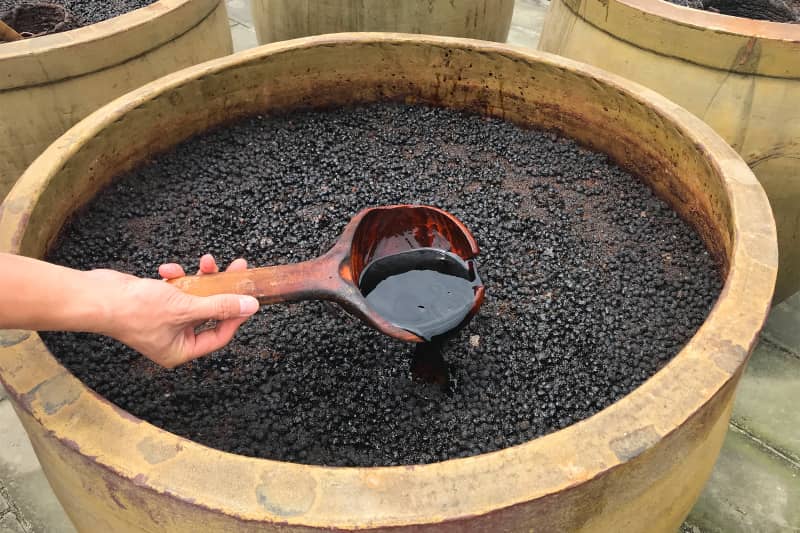


Fermentation Equals Flavor
During the fermentation process of all soy sauces, the soy and grain proteins are split into their component amino acids. These flavorful compounds—primarily one called glutamic acid—create the umami-rich taste. As time passes, the flavor intensifies as the continued fermentation generates new flavor compounds. The longer a soy sauce is fermented, the more complex it becomes. We noticed this while tasting, preferring more multidimensional soy sauces with longer fermentation times.
La Choy: A Bestseller We’d Rather Skip
A product of a company that specializes in Chinese American ingredients, La Choy is the second best-selling soy sauce in the United States, after Kikkoman. It’s made with acid-hydrolyzed soy protein rather than fermented soybeans, making it a slightly different product from fermented soy sauce. If other options are available, we suggest purchasing them instead because they offer more complexity and depth than La Choy, which is rather thin and one-dimensional.
The Wonderful World of Soy Sauce
To explore this dynamic ingredient we spoke with cookbook authors, culinary consultants, and chefs. We identified 12 styles of soy sauce used in cuisines around the world. All told, we tasted 31 soy sauces, from those readily available at local grocery stores to brands only available in the United States via specialty online retailers. While we cast a wide net, we undoubtedly missed something in this dynamic, living and breathing category. We will update our story as we continue to learn more. What we did taste opened our eyes to the incredible range of soy sauce. From sticky and sweet to thin, floral, and mushroomy, the category contains multitudes, and we think each style is worth a try.
Terms to Consider Before Buying
There are multiple descriptors of soy sauce (dark, thick, thin, light), but they’re uniquely used within each cuisine to differentiate one variety from another. For example, the all-purpose Japanese dark soy sauce is described as “dark” in color relative to the other regularly used Japanese variety usukuchi, but its usage is more similar to Chinese light soy sauce. When shopping, double-check the intended use before buying, and don’t consider these terms to be guiding principles for what a soy sauce will be like across cuisines.
We organized our research and findings from our tasting below by cuisine, starting with that of China, where soy sauce originated. We think the best way to expand your pantry is to start with the cuisine you cook from most and work your way outward from there. We’ve provided tasting notes so that you can learn about the different styles and choose brands that appeal to you. Read on to learn more about one of the world’s most important ingredients and add a bottle (or three!) to your pantry.

Chinese Cuisine
Sheng Chou (Chinese Light Soy Sauce)
What Is It? Chinese light soy sauce is the quintessential ingredient in Chinese and Taiwanese cooking. Its name translates to “fresh extraction,” but it’s known as “light” soy sauce. As a result, it is often confused with low-sodium versions. Reddish-brown in color, it often has a “floral” and “port-like” aroma. A subcategory of light soy sauce is “first press,” meaning the first batch of liquid pressed from the soybean mash after it has fermented for six months. It had more “robust soybean flavors” and was “sharper” than the ones brewed for longer.
When to Use It? This is a versatile all-purpose soy sauce, great for recipes that call for soy sauce without specifying a certain type, such as stir-fries, stew, or braises. It’s also good in cold dishes such as chilled tofu and smashed cucumber salad.
Look for bottles that specify the brewing length on the labels, such as Zhongba 360 Light Soy Sauce (a Chinese brand brewed for one year), which is infused with button mushrooms and is savory and full-bodied. Other Chinese brands we liked were Pearl River Bridge Superior Light Soy Sauce and Lee Kum Kee Supreme Soy Sauce; they were each brewed for six months and tasted deliciously briny. The Chinese first-press soy sauce we tried, Jammy Chai Superior First Press Soy Sauce, has a rounded and rich flavor; it commands a premium price due to smaller production. Taiwanese soy sauces are similar to Chinese in use and style. Kimlan, a time-honored soy sauce producer from Taiwan, makes a mainstay used in classic Taiwanese dishes such as San Bei Ji (Three-Cup Chicken). It’s a bit sweeter, as sugar is added.
Lao Chou (Chinese Dark Soy Sauce)
What Is It? Lao chou (Chinese dark soy sauce) translates to “old extraction,” as the liquid comes from soybeans that have been fermented longer than those used to make light soy sauce. Sugar is sometimes used to give it a viscous texture and dark coloring, says Taylor Holliday, proprietor of Sichuan specialty shop The Mala Market. It’s also a bit sweet, roasty, and winelike. In addition to traditional dark soy sauce, you can find a flavored variety infused with straw mushrooms or shiitake mushrooms—the mushrooms add umami and richness. Both styles of soy sauce are dark brown and more viscous in texture but less salty than Chinese light soy sauce. They’re used to bring color to dishes such as red-braised pork belly and beef, says Lucas Sin of Junzi Kitchen in New York City.
When to Use It? Dark soy sauce is typically added toward the end of cooking in red-braised pork belly and other “red-braised” proteins. This is a technique called “shang se,” employed because the soy sauce can overly darken the food if cooked too long. Because it’s so viscous and dark, most dishes only need a teaspoon (or less).
Look for Pearl River Bridge and Lee Kum Kee, the most readily available brands for traditional dark soy sauce and mushroom-flavored dark soy sauce, respectively. A nice upgrade pick is the Zhongba Dark Soy Sauce from China’s Sichuan province, which is a bit thinner and pleasantly mushroomy. The Taiwanese brand Kimlan also makes excellent dark soy sauce.
Japanese Cuisine
Koikuchi Shoyu (Japanese Dark Soy Sauce)
What Is It? Koikuchi shoyu—which can be translated as “dark,” “heavy,” “dark-colored,” or “thick” soy sauce—accounts for about 80 percent of the Japanese market. It’s dark brown and a bit sweeter than usukuchi, thanks to the addition of wheat. Tasters called it bright and bourbonlike with notes of salted caramel. Kikkoman, which is a koikuchi shoyu, dominates the market on the American mainland. The beloved soy sauce of Hawaii is a locally brewed brand of koikuchi shoyu called Aloha Shoyu.
When to Use It? Koikuchi is the Japanese everyday soy sauce, good for most applications, such as stir-fries, marinades, and braising.
Look for labels that say “marudaizu” (sometimes written as 丸大豆), as those products are made entirely from whole soybeans, as opposed to a combination of whole and defatted soybeans. Whole beans take longer to ferment, so there’s more time for flavors to develop and deepen. Kikkoman manufactures koikuchi shoyu soy sauce in the United States and Japan. Tasters noted the Kikkoman sauce brewed in the United States to be a bit saltier and less sweet than the one brewed in Japan; look for “Product of Japan” on the label if you prefer something less salty and more sweet. Kikkoman also makes marudaizu and organic marudaizu varieties, which are a bit pricey but worth seeking out for their depth of flavor.
Usukuchi Shoyu (Japanese Light Soy Sauce)
What Is It? Usukuchi is amber-hued and thin and is the preferred sauce in the Kansai region of Japan. It’s used for seasoning food rather than coloring it. It’s saltier than koikuchi shoyu with less funk. It’s sharp, acidic, and bright, with boozy notes that reminded some tasters of Shaoxing wine.
When to Use It? Usukuchi is used in Kansai cuisine, where popular dishes include takoyaki (battered and grilled octopus balls), okonomiyaki (Osaka-style savory pancakes), and yakiniku (grilled meat). You can use usukuchi in Japanese dishes when your goal is to add a bit of seasoning while preserving the dish’s own flavor, color, and aroma, such as in dashi and dipping sauce.
Look for the Kikkoman usukuchi, which is widely available and was pleasantly oaky and woodsy. The Yamasa brand is another good option; it was similar if a little sweeter. Another major brand we liked is briny and woodsy Suehiro Shoyu, which you can find at Asian grocery stores or online.
Tamari
What Is It? Tamari originated in Japan and is a by-product of miso manufacturing. Unlike most other soy sauces, tamari typically contains little to no wheat, which makes this style of soy sauce desirable for a gluten-free diet (be sure to check the package labeling or the ingredient list for wheat). It has a strong, earthy flavor and is a tad thicker than other Japanese soy sauces.
When to Use It? Tamari is versatile. It can replace other all-purpose soy sauces for those who avoid gluten.
Look for brands such as San-J, Kikkoman, and Yamasa as most grocery stores carry them alongside other styles of soy sauces. We suggest seeking out Ito Shoten tamari as a good splurge option. The company brews its tamari from whole beans, an expensive, time-consuming process that yields a full-bodied complexity.
Korean Cuisine
Ganjang (Korean Soy Sauce)
What Is It? Soy sauce, or ganjang, is an essential ingredient in Korean cooking. Ganjang is made using a technique introduced to Korea during the colonial era, explained Jaume Biarnés Digon, director of Yondu Culinary Studio. It’s dark brown and thin, similar to Japanese and Chinese all-purpose varieties of soy sauce. Our tasters found it aromatic and sweet with hints of meatiness, “allium,” and “bacon.”
When to Use It? Ganjang is widely used in everyday Korean cooking, in dishes such as bulgogi, bibimbap, and stir-fry. It’s also great for making marinades in conjunction with other Korean jangs (fermented sauces made from soy blocks) such as gochujang, according to Wonsuk (Alex) Jeong, sous chef at Jungsik New York.
Look for labels indicating “yangjoganjang,” which means the soy sauce was naturally brewed from soybeans, as opposed to “jinganjang,” which is made from a combination of hydrolyzed and naturally brewed soy sauce. “Yangjoganjang” is the premium version and our tasters noted more complexity and a pleasing “balance between saltiness and sweetness” in yangjoganjang Sempio 501, compared to Sempio Jin S, a jinganjang made by the same brand.
Guk-Ganjang (Korean Soy Sauce for Soup)
What Is It? Guk-ganjang is a traditional Korean soy sauce made entirely from fermented soybean bricks called meju, which are traditionally hung to dry in barns for several weeks before aging in crocks with brine. The brine is then boiled to become soy sauce; the remaining solids become doenjang, a fermented soybean paste. It’s lighter in color and saltier than regular ganjang with vibrant and juicy notes, like a “fig balsamic [vinegar],” according to one taster.
When to Use It? “Guk” means soup in Korean, but gukganjang’s usage is wider than its name, adding an irreplaceable touch to traditional dishes, says Biarnes. It can be used in addition to a regular ganjang or in dishes such as mul-naengmyeon (cold noodles in soup) and a variety of namul banchans, a category of Korean vegetable dishes.
Look for “naturally brewed” and “aged for six months” on the label, as the long fermentation length allows for more complex flavors to develop. For gukganjang, we liked the bright and briny Sempio Naturally Brewed Soy Sauce for Soup, Chosun and Sempio Soy Sauce for Soup.
Thai Cuisine
See Ew Khao (Thai Thin Soy Sauce)
What Is It? Thai thin soy sauce is the all-purpose type under the Thai soy sauce umbrella, says Thai chef Pam Liberda of Waldo Thai in Kansas City, Missouri. As the name implies, its texture is thin, similar to Chinese light soy sauce. It’s mild and salty and sometimes tastes slightly boozy with a touch of funkiness and papaya-like fruitiness.
When to Use It? Use it n stir-fries, such as pad see ew (soy sauce stir-fry), and braising, including neua tun (Thai braised beef).
Look for Healthy Boy and Kwong Hung Seng (sometimes referred to as “Dragonfly” because of its logo), the most popular brands in Thailand, which are widely available online and at Asian grocery stores. Healthy Boy’s version was sharper and more briny, but they were otherwise similar.
See Ew Wan (Thai Sweet Soy Sauce)
What Is It? Thai sweet soy sauce is thick and dense. Palm sugar lends a rich and molasseslike flavor, mellow and juicy like dates, according to our tasters.
When to Use It? It can replace sugar in stir-fries and is delicious in dipping sauces. It’s essential in Liberda’s pad see ew, which uses both sweet and thin Thai soy sauces.
Look for Healthy Boy and Kwong Hung Seng, as they’re the two major brands. You can find them both online and at Asian grocery stores. Tasters noticed floral, sweet, and oaky notes in the Healthy Boy and darker sweet notes, including “licorice” and “dates,” in the Kwong Hung Seng.
Filipino Cuisine
Toyo (Filipino Soy Sauce)
What Is It? Soy sauce was brought to the Philippines by Chinese traders, who gave the ingredient its localized name “toyo,” which is derived from “tau-yu,” the word for soy sauce in the southern Chinese dialect of Hokkien. In addition to soybeans, wheat, and salt, caramel coloring is a common ingredient. Our tasters described toyo as toasty, malty, and citrusy with notes of earth and fermented fruit.
When to Use It? Toyo plays a key role in Filipino national dishes. Jenn de la Vega, a chef and cookbook author based in Brooklyn, recommends using it in adobo and sinangag (fried rice) as well as in sawsawan, a dipping sauce that uses toyo combined with vinegar and sometimes fresh herbs and is served with grilled liempo (pork belly) and other proteins.
Look for major brands such as Datu Puti and Silver Swan, available online (including at specialty grocer Weee!) and locally at Asian grocery stores. We found another good option, Marca Piña, on Amazon, shipped from the Philippines. Use Datu Puti for more intense coloring and Silver Swan or Marca Piña for savoriness with less intense browning.
Indonesian Cuisine
Kecap Manis (Indonesian Sweet Soy Sauce)
What Is It? Kecap Manis is an Indonesian soy sauce made from fermented soybeans, wheat, and palm sugar, which makes it intensely sweet, glossy, and viscous, like molasses. It was also floral and less briny than other styles we tasted. Kecap Manis is also popular in Malaysia, though what’s consumed there is typically produced in Indonesia.
When to Use It? Use for a sweeter, thicker addition to stir-fries and stews, such as nasi goreng (Indonesian fried rice), mie goreng (Indonesian fried noodle), kwetiau goreng (fried flat noodle), ayam kecap (chicken in sweet soy sauce), and babi kecap (braised pork).
Look for popular brands from Indonesia including ABC Brand and Conimex, which are widely available online and at Asian grocery stores in the United States. The texture of kecap manis from ABC Brand and Conimex varies dramatically, the former being much thicker than the latter.
Peruvian Cuisine
Sillao (Peruvian Soy Sauce)
What Is It? Chinese immigrants brought soy sauce to Peru in the 1800s as they arrived in the country to build railroads and work in mines and on sugar plantations. Over time, waves of immigration created what later became known as Chifa cuisine, which incorporates both Peruvian and Chinese food traditions, explains JuanMa Calderón of Celeste, a Peruvian restaurant in Somerville, Massachusetts. Today Chifa is so ingrained in Peruvian culture, the names for certain ingredients in the Spanish Peruvian language are directly borrowed from Cantonese. For instance, ginger is known locally as “kion,” the Cantonese word for ginger. And the word for soy sauce, “sillao,” is from the Cantonese word for soy sauce, “si yau.”
When to Use It? Peruvian sillao is sweet, floral, and salty, making it ideal for stir-fries and Chifa dishes, such as arroz chaufa (fried rice), lomo saltado (stir-fried beef), and tallarín con pollo (chicken with noodle).
Look for popular brands such as Kikko Siyau and Sillao Ajino, which were both floral, sweet, and pleasantly salty. Sillao is widely available online and at stores that specialize in Central and South American foods.
